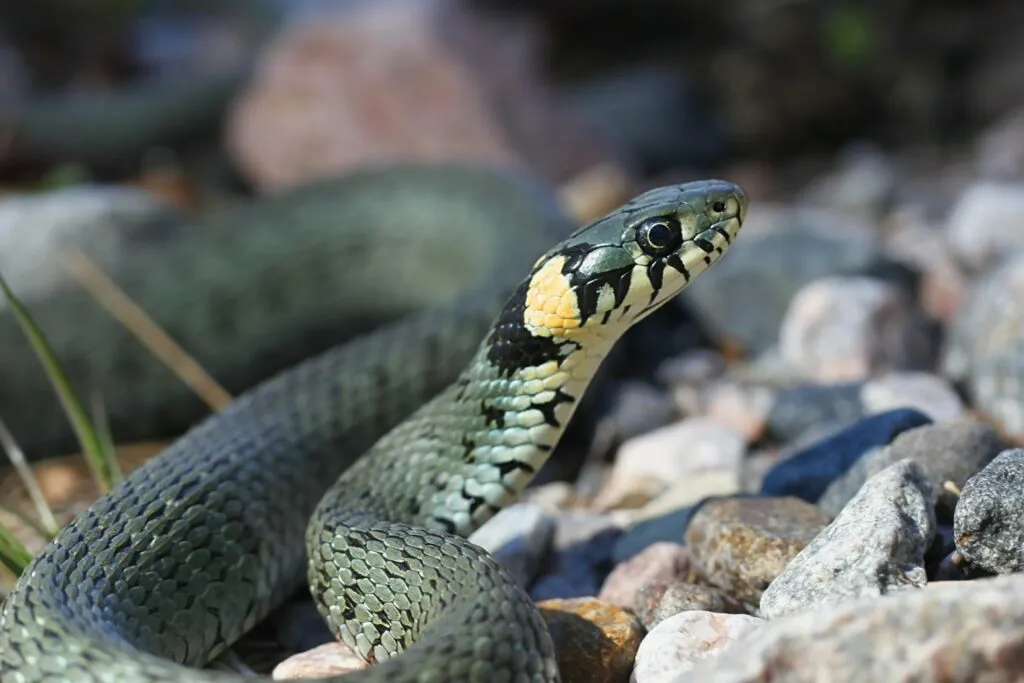
As the cold season sets in, your pet snake may begin refusing to eat despite being healthy and having the correct living standards in its vivarium. You may be uncertain whether you should be tempting it to eat, or stop offering
Snakes should not be fed during brumation. This is because your pet naturally minimizes its physiological processes in response to low temperatures and reduced daylight. Feeding the snake during brumation may trigger serious health issues or fatality.
Would you like to learn more about why you shouldn’t feed your snake during brumation? This article provides a complete explanation, including how long brumation lasts and how you can navigate the situation appropriately.
Why You Shouldn’t Feed a Snake during Brumation
Brumation is a period of reduced activity in reptiles, similar to hibernation in mammals. Although snakes don’t sleep during the period as hibernating animals do, they close down their systems to conserve energy and prepare for reproduction.
You shouldn’t feed a brumating snake because it’s unable to digest the
What Would Happen if a Snake Was Fed During Brumation?
A snake will typically refuse to eat a few weeks before it brumates. If it eats during that period, it will be forced to seek heat to facilitate digestion. Without warmth, the
If your pet accidentally eats during brumation, it is best to skip the rest of the brumation period. Bring its cage temperatures back up to normal to get their digestion moving again. Be ready to see your vet if your pet appears unwell.
Do Snakes Need To Drink During Brumation?
Although snakes don’t require
However, snakes will continue drinking water throughout their brumation period to stay hydrated. Sometimes they even immerse themselves in water to hydrate their skins.
Dehydration can kill snakes quickly, so keep a water source available at all times.

Preparing a Snake for Brumation
Snakes in countries that experience winter seasons will brumate. Tropical snakes such as ball pythons and boas originate from warm temperature zones, so they don’t brumate.
Also, young and growing snakes should not brumate, but should be fed throughout the year.
Snakes enter brumation between October and December, coming out of it between March and April, depending on the climate where they live. Snakes naturally sense when their time for brumation is approaching, based on ambient temperatures.
However, captive snakes don’t always brumate because their enclosures are at a fairly constant temperature. You may let your pet skip brumation, but you can also brumate it by lowering its cage temperatures.
You should only allow your snake to brumate if it’s in perfect health. Weigh it and check for any signs of illness or injury.
Let a herp vet take fecal samples and screen for parasites or pre-existing infections. A snake’s immune system is less strong during brumation, so infections can get worse or even become fatal if the snake brumates.
If the results show your snake is in good health, you can proceed with the brumation procedure. Choose a cold, undisturbed spot such as a spare laundry room, bedroom, or basement for your snake to brumate in.
Feeding a Snake Before Brumation
Before brumation, feed your snake as usual until three weeks before you plan to start brumation. The snake uses its
The last feed should be followed by three weeks of fasting with only water. This allows complete clearance of a snake’s digestive system before entering brumation.
You can see part of the brumation preparation process here:
Caring for a Brumating Snake
Besides starving your brumating snake, provide enough water for drinking and soaking. Avoid handling the snake. Provide hiding places and lower the temperatures gradually. Brumation usually occurs at 60℉ and below.
You should have a digital thermometer and a hygrometer to help maintain the right temperature and humidity in your pet’s terrarium. Visually inspect your pet daily for symptoms of illness or disease.
Weigh your snake (in its container) weekly and record its weight. In general, because their metabolism slows so dramatically, your snake shouldn’t lose more than 10% of its body weight during brumation.
If you notice any symptoms of illness, or your snake is losing too much weight, reverse brumation and immediately seek the help of an experienced reptile vet.
When Should You Reverse Brumation?
Always reverse brumation at 12 weeks at the latest. If you observe symptoms of illness or if your snake loses weight excessively, don’t allow it to complete brumation. Warm it up, bathe it and call a vet immediately.
When reversing brumation, increase the temperatures gradually to the preferable range within one week. Delay feeding for 2-3 weeks to allow your pet’s system to resume functioning.
Here’s a video of how to bring snakes out of brumation:
Conclusion
A brumating snake should stay without food and survive on water only for the entire period, starting from three weeks before brumation.
Handling brumation confidently will ensure a trouble-free process and a healthier, more fertile snake. Organize an appointment with your vet for a post-brumation check once your snake has finished brumation.
- Enchi Ball Python: A Unique and Stunning Morph of Python regius - March 27, 2025
- Emerald Tree Monitor: The Enigmatic Green Guardian of the Rainforest - March 26, 2025
- The Egyptian Cobra (Naja haje): A Fascinating Serpent - March 25, 2025
